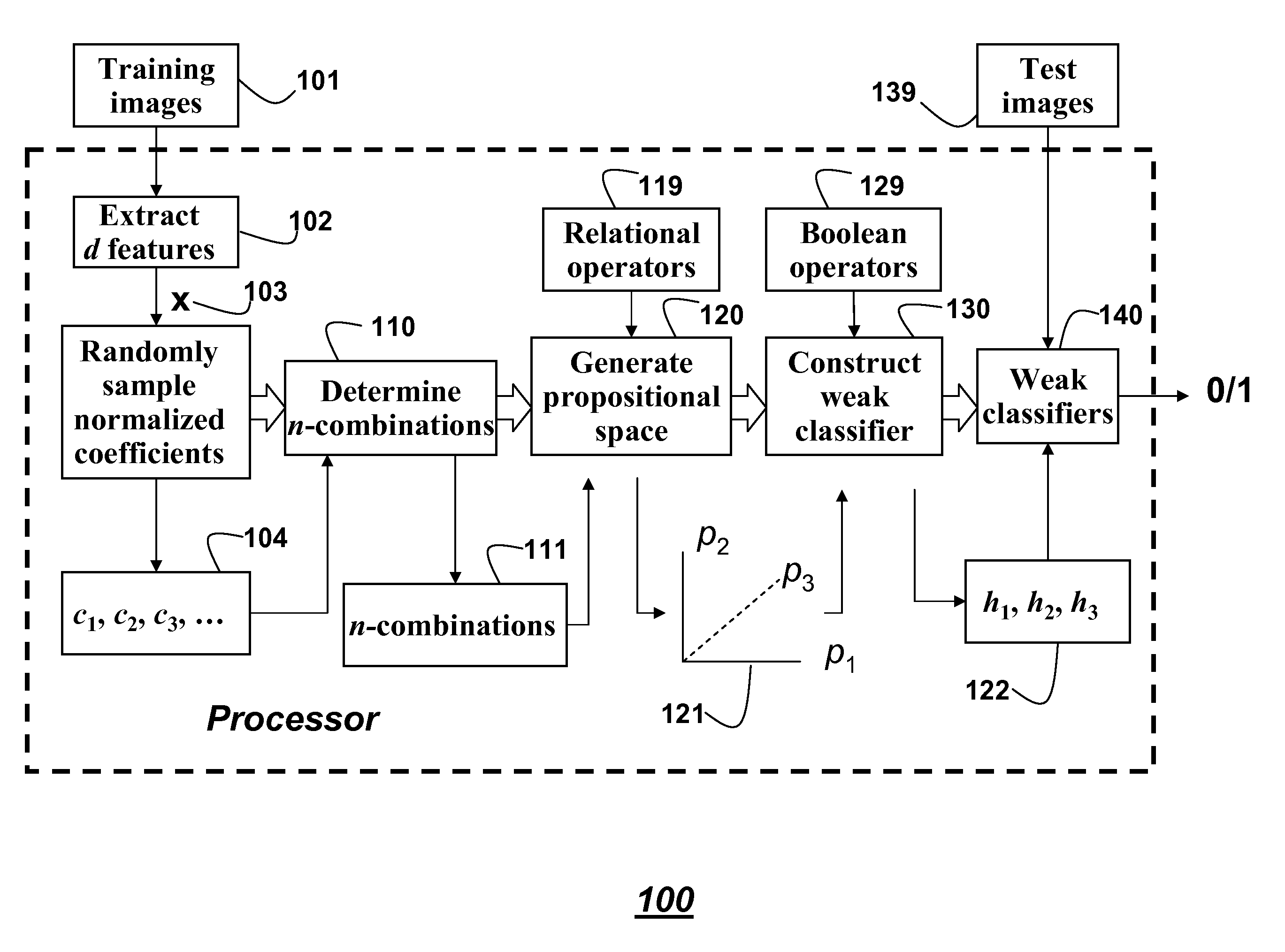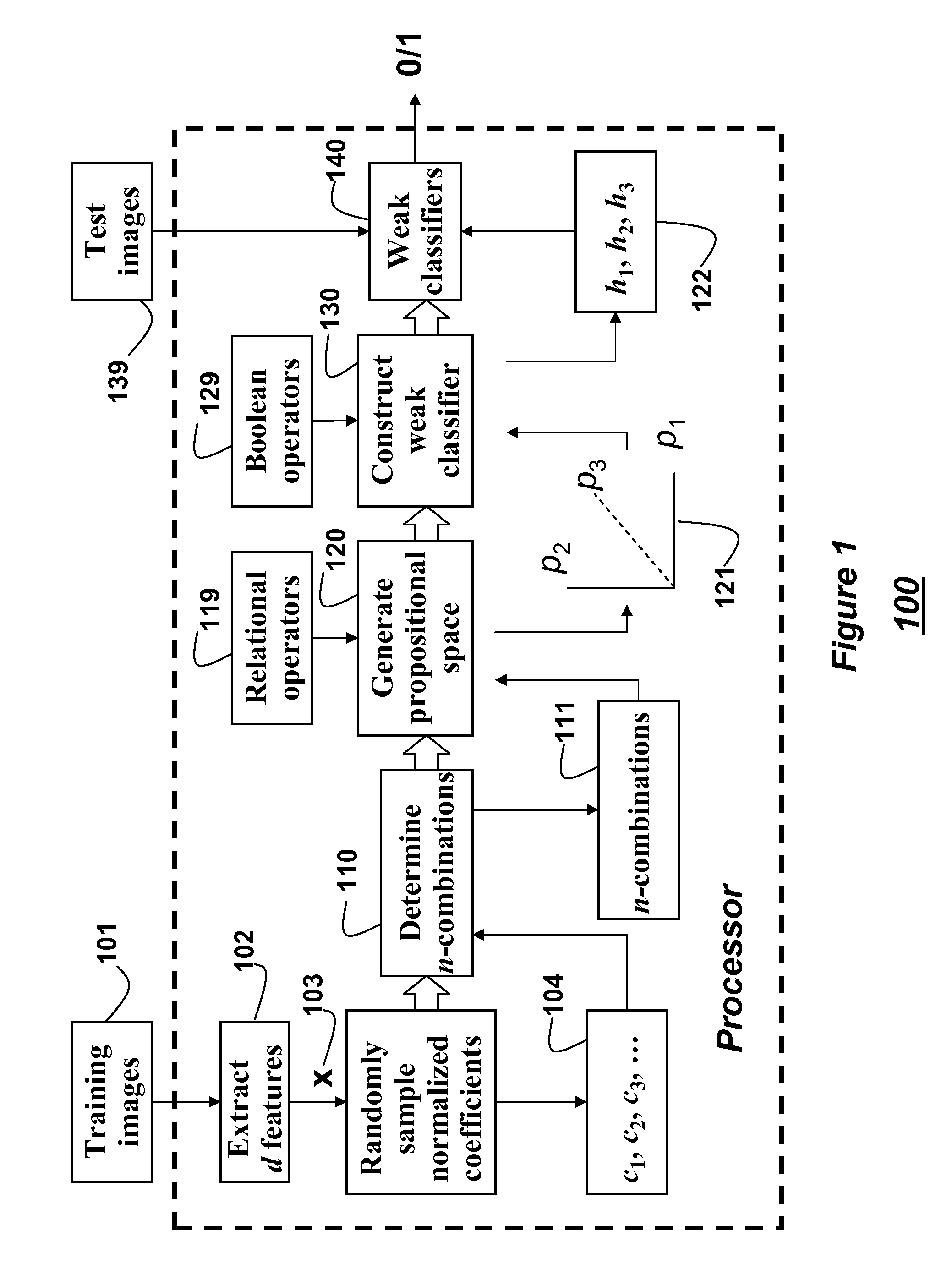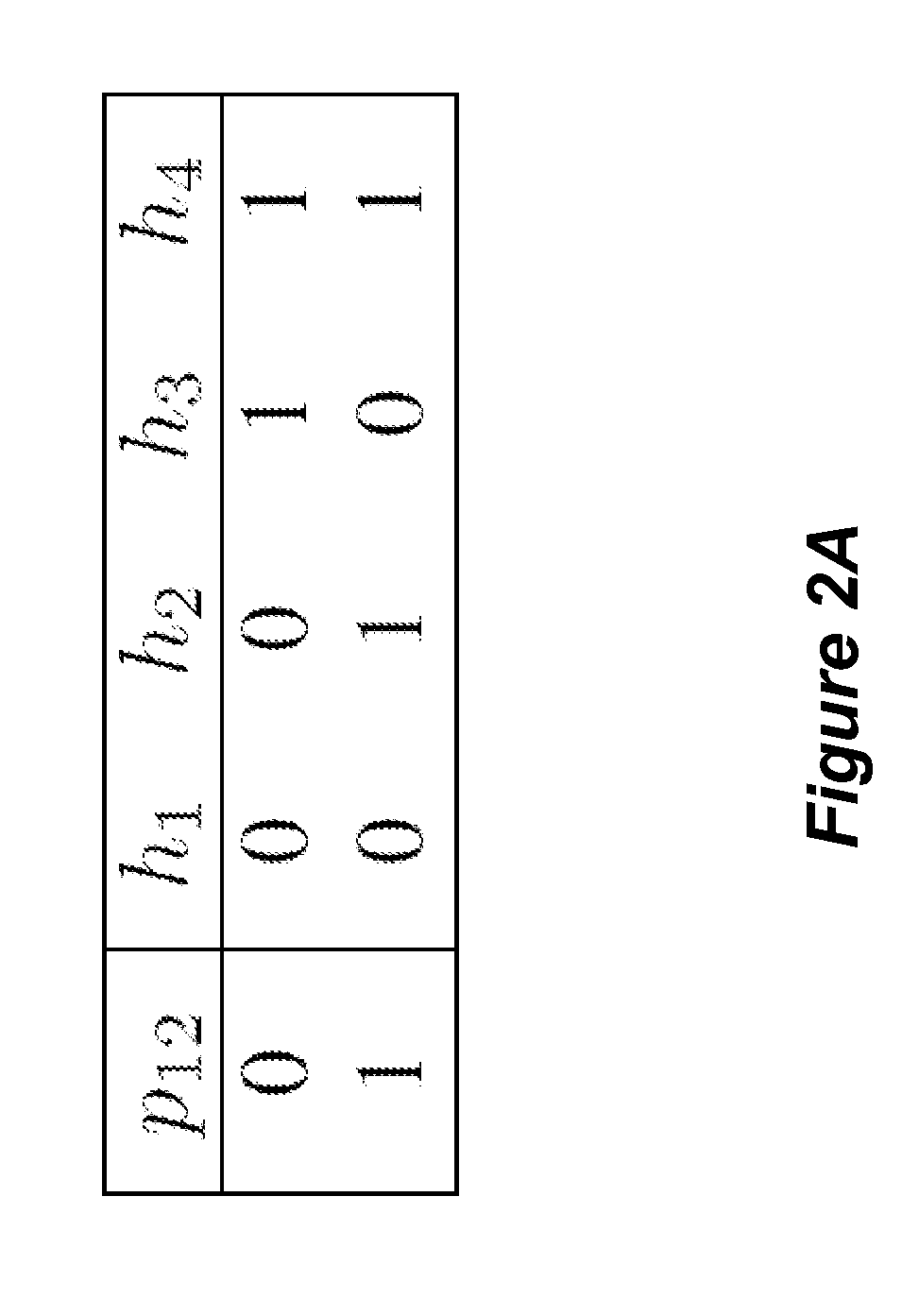Object Detection Using Combinations of Relational Features in Images
a relational feature and object detection technology, applied in the field of computer vision, can solve the problems of complex detection problems, one of the most fundamental and challenging tasks of object detection, etc., and achieve the effect of better object structure imposition
- Summary
- Abstract
- Description
- Claims
- Application Information
AI Technical Summary
Benefits of technology
Problems solved by technology
Method used
Image
Examples
Embodiment Construction
[0032]FIG. 1 shows a method and system 100 for detecting an object in an image according to embodiments of our invention. The steps of the method can be performed in a processor including memory and input / output interfaces as known in the art.
[0033]We extract 102 d features in a window in a set (one or more) training images 101. The window is part of the image that contains the object. The object window can be part or the entire image. The features can be stored in a d-dimensional vector x 103. The features can be obtained by raster scanning the pixel intensities in the object window. Therefore, d is the number of pixels in the window. Alternative, the features can be a histogram of gradients (HOG). In either case, the features are relatively low-level.
[0034]We randomly sample 103 n normalized coefficients 104, e.g., c1, c2, c3, . . . , cn, of the features. The number of random samples varies can depend on a desired performance. The number of samples can be in a range of about 10 to...
PUM
 Login to View More
Login to View More Abstract
Description
Claims
Application Information
 Login to View More
Login to View More - R&D
- Intellectual Property
- Life Sciences
- Materials
- Tech Scout
- Unparalleled Data Quality
- Higher Quality Content
- 60% Fewer Hallucinations
Browse by: Latest US Patents, China's latest patents, Technical Efficacy Thesaurus, Application Domain, Technology Topic, Popular Technical Reports.
© 2025 PatSnap. All rights reserved.Legal|Privacy policy|Modern Slavery Act Transparency Statement|Sitemap|About US| Contact US: help@patsnap.com



